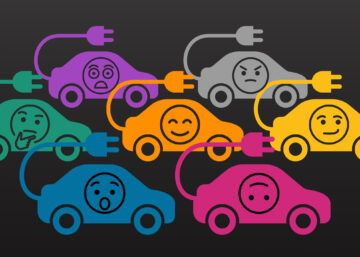As we all know, technology is advancing rapidly and your marketing campaigns need to adapt accordingly. Just because something is new doesn’t necessarily mean it is the best fit for your business. While digital tools and platforms are easily adaptable, your organization needs to carefully consider its options. Here are a few thoughts on 3 of the more popular promotional tech tools: QR Codes Like any communication messaging, if approached correctly, QR codes can enhance user experience, and add to the ROI, by bringing your audience directly to a website or online promo to convert them into potential customers. There are several reasons as to why you might consider using QR codes: QR codes have not yet reached their potential but are pushing creative advancements to this technology. Here is a link to Visuallead, a company that has high hopes and some creative upgrades for the QR code. So, don’t give up on QR codes just yet; as this article in Marketing Land describes, they might not be as “dead” as we think. Augmented Reality Like virtual reality of the past, AR could flourish in the gaming realm. Google’s MagicLeap produced this video (although it is unclear as to whether or not it is really AR, or a simulation), which shows how one might enjoy an AR interface in a game-play scenario. AR has the potential to gain more mainstream appeal with services like those offered through the Aurasma App. Learn more about it here. Podcasts The podcast format seems to level the broadcast field for everyone, but you still need to get people to listen. One benefit is that relatively small demographics, such as graphic design (http://www.debbiemillman.com/designmatters) and niche software companies like BaseCamp (https://thedistance.com), can now reach audiences just as easily as tuning in to more mainstream shows. Just like QR Codes and Augmented Reality, however, there can be downsides if your organization jumps blindly into podcasts before educating itself. A useful article on the good, the bad, and the ugly of podcasting can be found at Shift Media. Here is another article asking the hard question as to whether or not you should start your own podcast. The goal of any marketing effort and/or messaging is to engage your audience, build and cultivate a relationship, gain trust and acquire customers and clients…perhaps for life. Therefore, if you are considering any of the aforementioned technologies, carefully evaluate the pros and cons. Ask yourself: “Does this make sense for us, our company and/or our services?” If there is any hesitation (or you are not clear on what these technologies do), you may want to continue your research. – Sean FermoyleTechnology
The Ups and Downs of Promotional Technology Trends
They have been around for years and seem to have reached a period in their use and function that is commonplace. However, if misused or misplaced, they can shed a negative light on your organization. As Scott Stratten of UnLearn states in this brief video, “just because you can, doesn’t mean you should”.
Source: http://www.waspbarcode.com/buzz/5-ways-qr-codes
A distant, younger cousin of the QR code is augmented reality. AR is gaining traction, or at least popularity, as an enhanced experience that can reach and entertain audiences with “hidden” or “VIP” content. However, if used haphazardly simply as eye candy with no real experience or value, it’s potential audience will quickly lose interest. AdStuck published an article about the different types of augmented reality and the pros and cons of each.
Another example of a trending technology is podcasting. Think of a podcast as self-publishing in a radio format that is relatively inexpensive to produce. The topics you can cover are as varied as the industries in the world. The entertainment industry’s interest in this format is currently on an upswing with the popularity of podcasts like Marc Maron’s WTF (a comedy/interview show) or This American Life (a Chicago Public Media news magazine). A complete list of podcasts and their popularity rankings can be found here.

